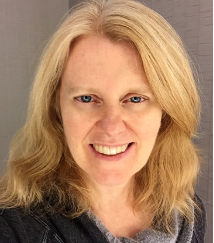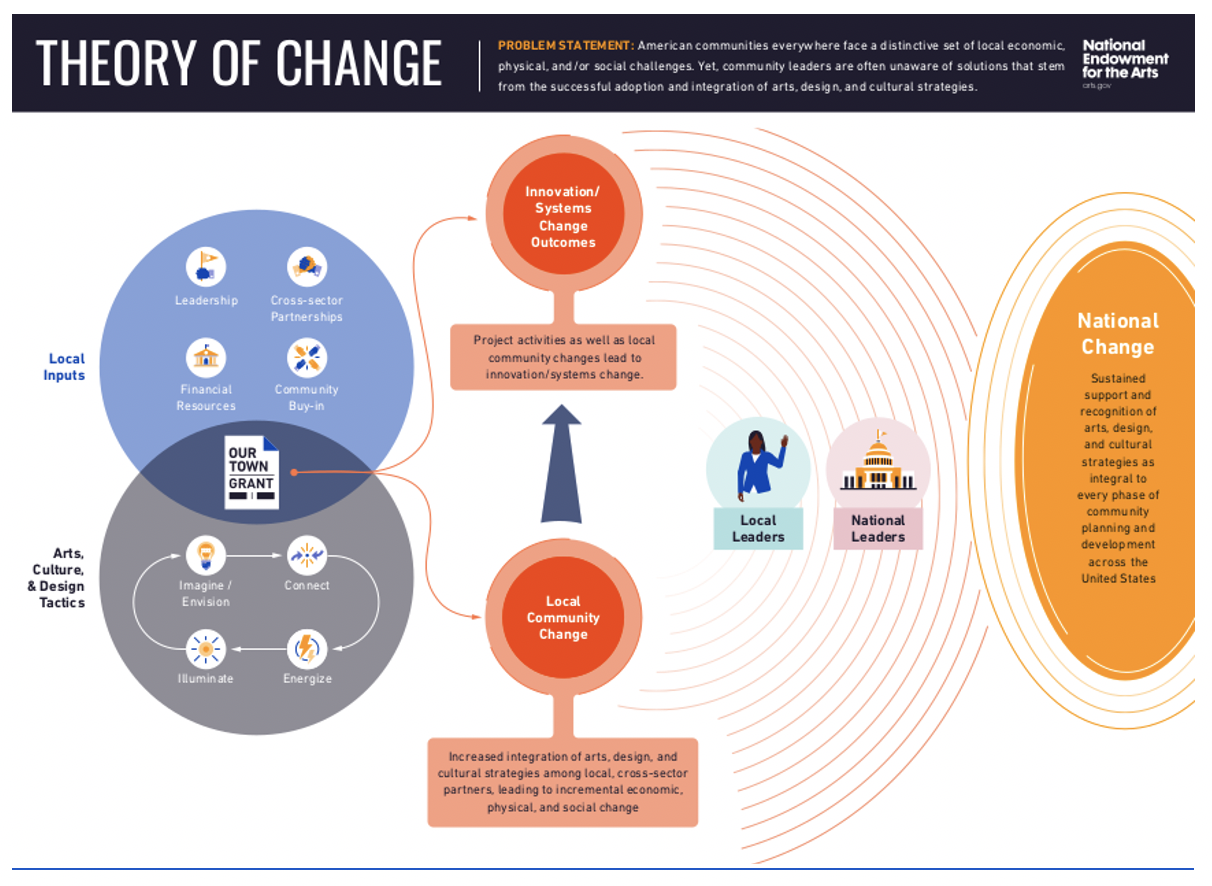
Hi. I’m Patricia Moore Shaffer, Research & Analysis Deputy Director of the National Endowment for the Arts and served as the 2020 President of the Washington Evaluators.
In my role as the agency’s internal evaluator, I began working with the Arts Endowment’s Our Town grant program team in 2016. The Our Town program supports creative placemaking projects across the U.S. that help transform communities into lively, beautiful, and resilient places. Our Town grants support projects that integrate arts, culture, and design activities into efforts that strengthen communities by advancing local economic, physical, and/or social outcomes. Successful Our Town projects ultimately lay the groundwork for systemic changes that sustain the integration of arts, culture, and design into strategies for strengthening communities.

Working with the program team and contractor 2M Research, we reviewed past Our Town projects and identified promising practices to establish a theory of change and a logic model that could guide future grant-making. The Our Town theory of change and logic model, now available here as an online resource, grew from an iterative process over the course of more than a year. The process involved analyzing existing data from Our Town grantees, including grant applications and final reports, and existing case studies available on the agency’s Exploring Our Town website; interviewing national experts; and reviewing place-based programs and tools. A technical working group of field experts offered constructive criticism on early drafts of the models. A national survey of Our Town grantees and in-depth grant case studies helped the team to validate the models.
Lessons Learned:
It is particularly challenging to collect evidence for Our Town systems change outcomes through grantee reports. Community systems change is slow; it can take years to achieve the kinds of outcomes that many creative placemaking efforts aim for. Program research helped the agency identify early “indications” of progress toward systems change that are correlated with the creative placemaking outcomes. These early indications include:
- Sustained partnerships that will continue beyond the grant period increase capacity to sustain program activities and integrate arts, culture, and design in other activities
- Active communication of project successes especially in rural or high need areas, can lead to increased opportunities for funding, new partnerships, and longer-term integration of arts, culture, and design in community development
- Artists trained in creative placemaking can sustain/replicate program activities, increase organization’s capacity, and perpetuate the successes of projects
- Project outputs that include actionable policy changes that influence and shape municipal organizations conversations related to policies, norms, and practices, and lead to the institutionalization of arts, culture, and design
- New hires or positions in grantee organizations increase organizational capacity to sustain project activities and influence organizational norms, policies, and practices
Rad Resources:
There are several new resources on measuring creative placemaking:
- The Routledge Handbook of Placemaking, 2021
- The Role of Arts and Culture in Equitable Community Development: A Visual Analysis, 2020
The American Evaluation Association is celebrating Arts, Culture, and Museums (ACM) TIG Week. The contributions all week come from ACM TIG members. Do you have questions, concerns, kudos, or content to extend this aea365 contribution? Please add them in the comments section for this post on the aea365 webpage so that we may enrich our community of practice. Would you like to submit an aea365 Tip? Please send a note of interest to aea365@eval.org. aea365 is sponsored by the American Evaluation Association and provides a Tip-a-Day by and for evaluators.
